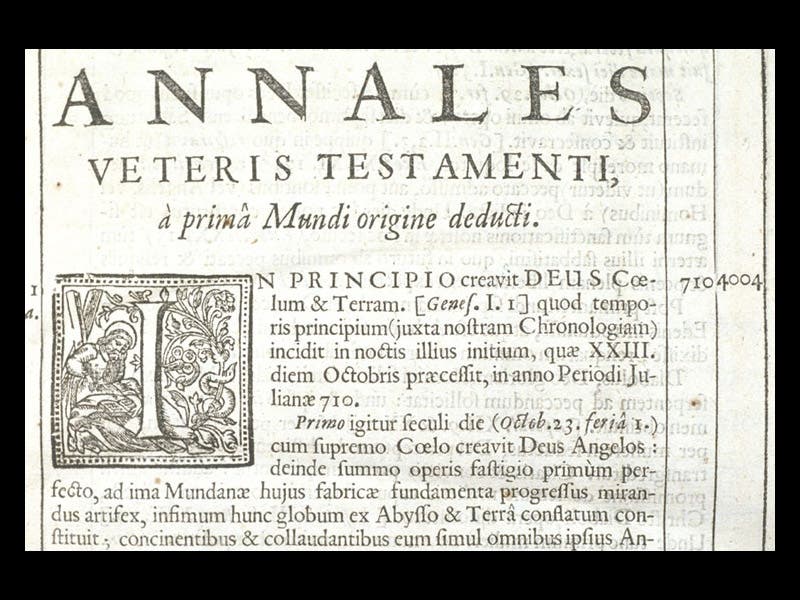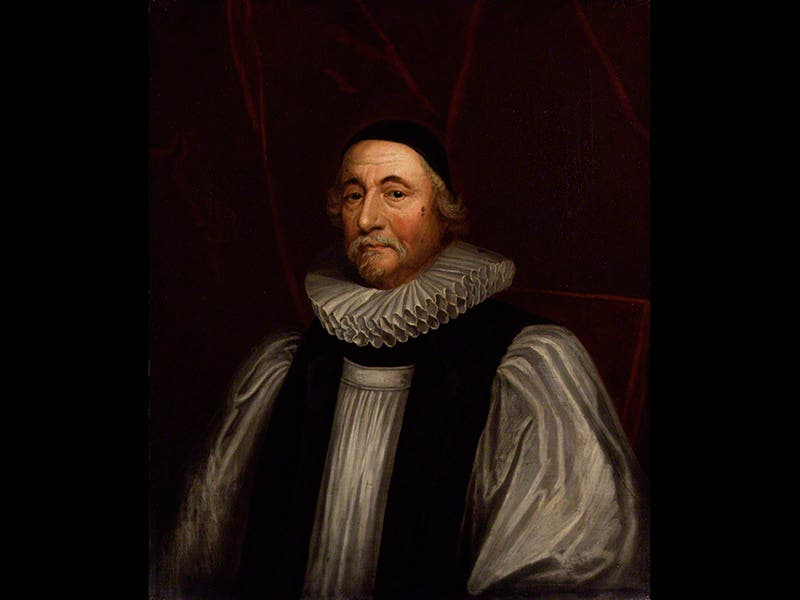Scientist of the Day - James Ussher
Archbishop James Ussher, an Irish cleric, was born Jan. 4, 1581. Ussher was quite a respectable scholar, but he is remembered today primarily for the first paragraph of his Annales Veteris Testamenti (Annals of the Old Testament, 1650) and its marginal note. The Annals was essentially a learned commentary on Scripture, and after quoting the first verse of Genesis ("In the Beginning, God created heaven and earth"), Ussher commented: "which beginning of time, according to our chronology, occurred at the beginning of the night which preceded the 23rd of October in the year 710 of the Julian period." In the margin, he noted the Julian year and then converted it to its equivalent in the Christian calendar: 4004 BC (first image).
Ussher was neither the first nor the last to calculate the date of creation using the genealogies set down in the Old Testament. There were many such attempts, but most of them resulted in an earth that was just under 6000 years old. Ussher's date of 4004 BC distinguished itself from the others because, beginning in 1701, all editions of the King James Bible included "4004 BC" in the margin at the beginning of Genesis. A century later, when geologists began proposing a much older earth, it was Ussher's date of 4004 BC that they used as their foil. And when it was geologically established, by the middle of the nineteenth century, that the Earth was hundreds of millions of years old, Archbishop Ussher became a symbol for blind religious recalcitrance and opposition to obvious scientific truth, a status Ussher most definitely does not deserve. He was really an excellent chronologist and Biblical scholar, and it is not his fault that, in 1650, there was no other source for early Earth history than the Bible.
There is a fine portrait of Ussher in the National Portrait Gallery of London, presenting a wise and congenial visage that suggests we should not rush to judgment (second image). There is also a stone likeness in St. Anne’s Cathedral in Belfast, where Ussher sits atop a pillar and keeps company with Augustine and Athanasius. Ussher was buried in Westminster Abbey, where there is an informative gravestone (if you read Latin) (third image).
One might not expect a science library to have a copy of Ussher’s Annals, but we do; it came along as a bonus when we acquired the Engineering Societies Library in 1995. Some years ago, when we organized an exhibition on the discovery of geological time, we began that exhibit with the “4004 BC” page of Ussher’s book.
Dr. William B. Ashworth, Jr., Consultant for the History of Science, Linda Hall Library and Associate Professor, Department of History, University of Missouri-Kansas City. Comments or corrections are welcome; please direct to ashworthw@umkc.edu.









